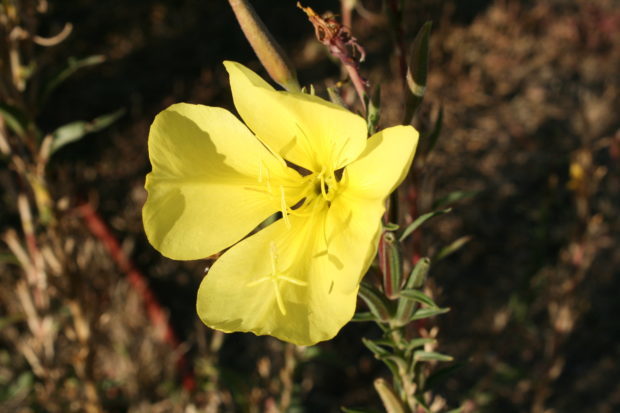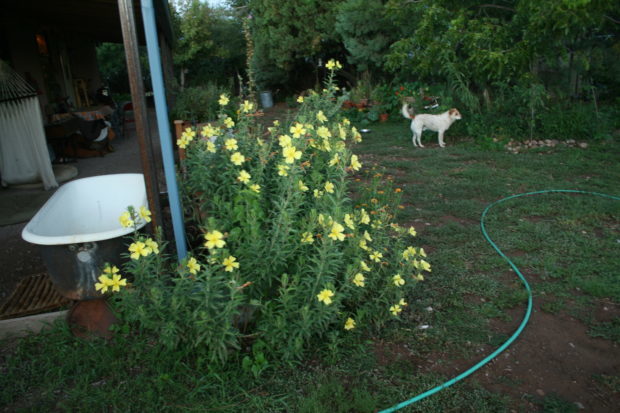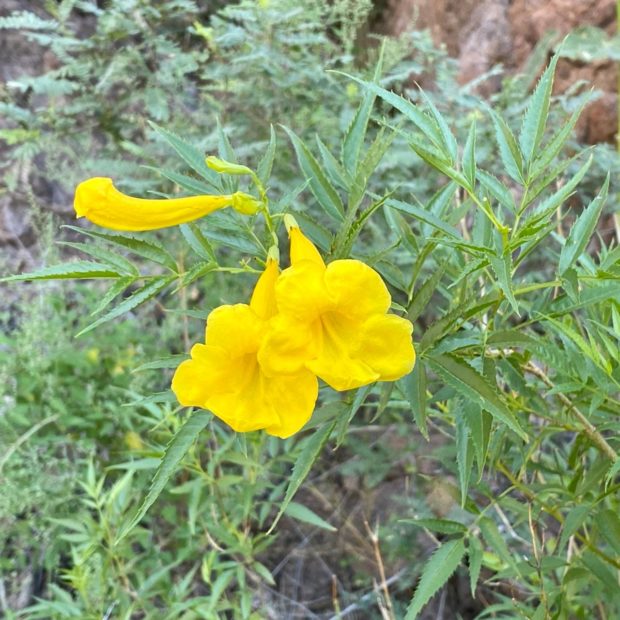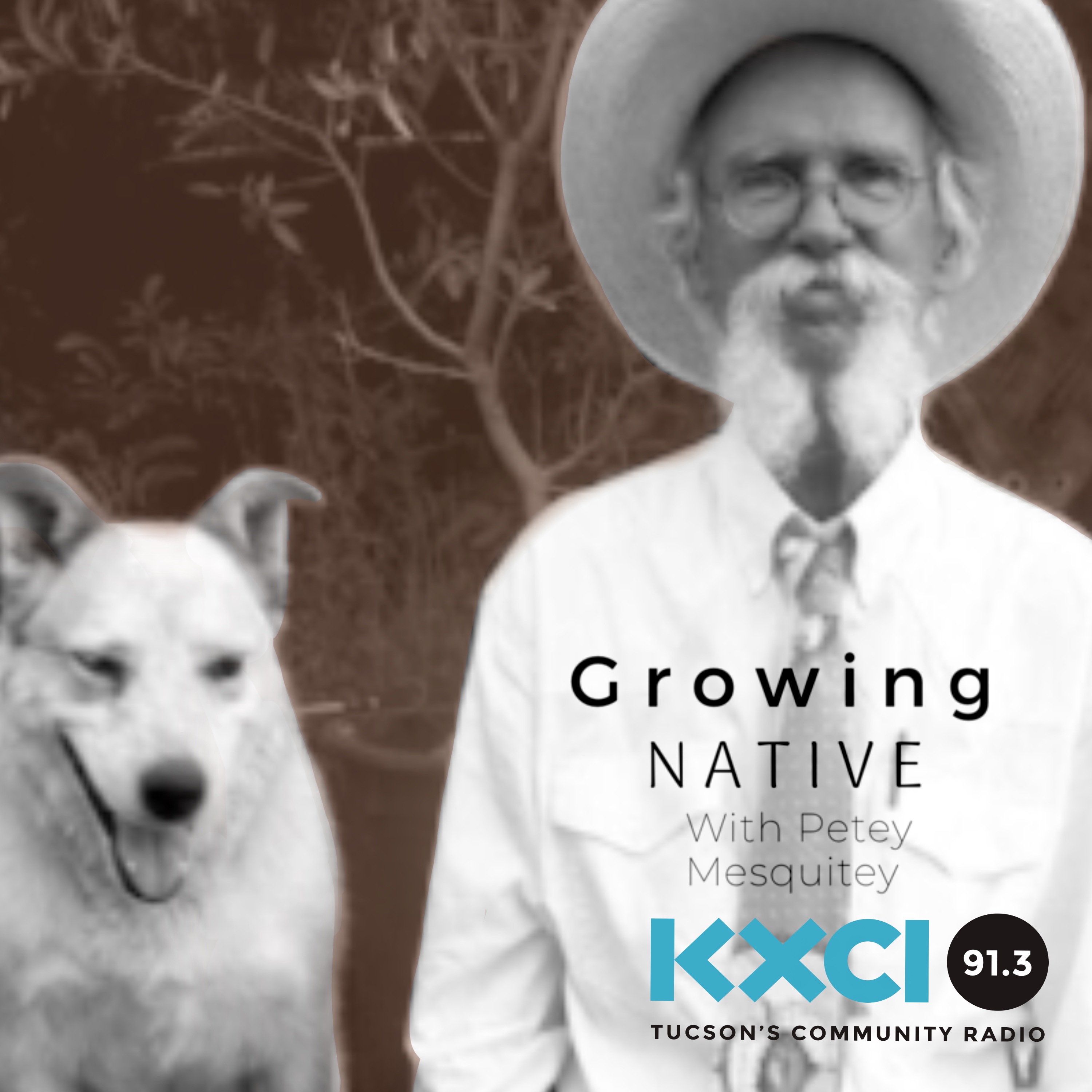It’s nice to have a yard full of native plants. Most of the time I have an idea what and where I want to plant things, but I confess to sometimes just plugging a plant to get it out of a nursery bucket and into the ground. “That will look nice right there,” I’ll say to myself and then a year later I’ll wonder what the heck was I thinking? Oh well, I can tell you that I have no choice where a Hooker primrose will end up. They started making that decision themselves after I planted that very first Oenothera hookeri. The woody seed capsules that follow the bright yellow flowers are loaded with small seed and those seed germinate very easily. Hooker primrose in a nursery setting is a dangerous thing! There is lots of water and soil to make a home for next year’s crop. Oh my goodness, I spend considerable time digging the deep rooted biennials out of buckets and from the earth around them.
Nowadays we do leave a few in areas where we think they might be pretty. I mean, my gosh, they do bloom all summer and into the fall! The fact that you can sit outside in the early evening and watch the flowers unfurl and open right before your eyes is just so cool and then sphinx moths (hawk moths) seem to appear out of nowhere and slam into those brand new flowers in search of nectar. The following morning I’m sure those yellow blooms are exhausted and they wilt and fade to orange. I have a complicated relationship with Hooker primrose I suppose. I mean it’s a love/hate sort of thing, but mostly love.

The photos are mine. One of a hooker primrose flower blooming atop an old stalk. You can see some seed capsules on the stem below the flower. The other photo is of a bushy specimen we let grow by our back porch. You can see that it’s quite floriferous. Oh, and that’s Farley in the background walking through our biome.


Tecoma stans angustata is in the Bignonia family Bignoniaceae and there are a bunch of species of Tecoma starting here in the borderlands with...

Petey finds a young abandoned peccary under a mesquite tree and looks up just in time to see a large group of peccaries disappearing...

It was Carl Linnaeus, the king of binomial nomenclature, who decided to use the classical Latin name fraxinus as the genus for ash trees....